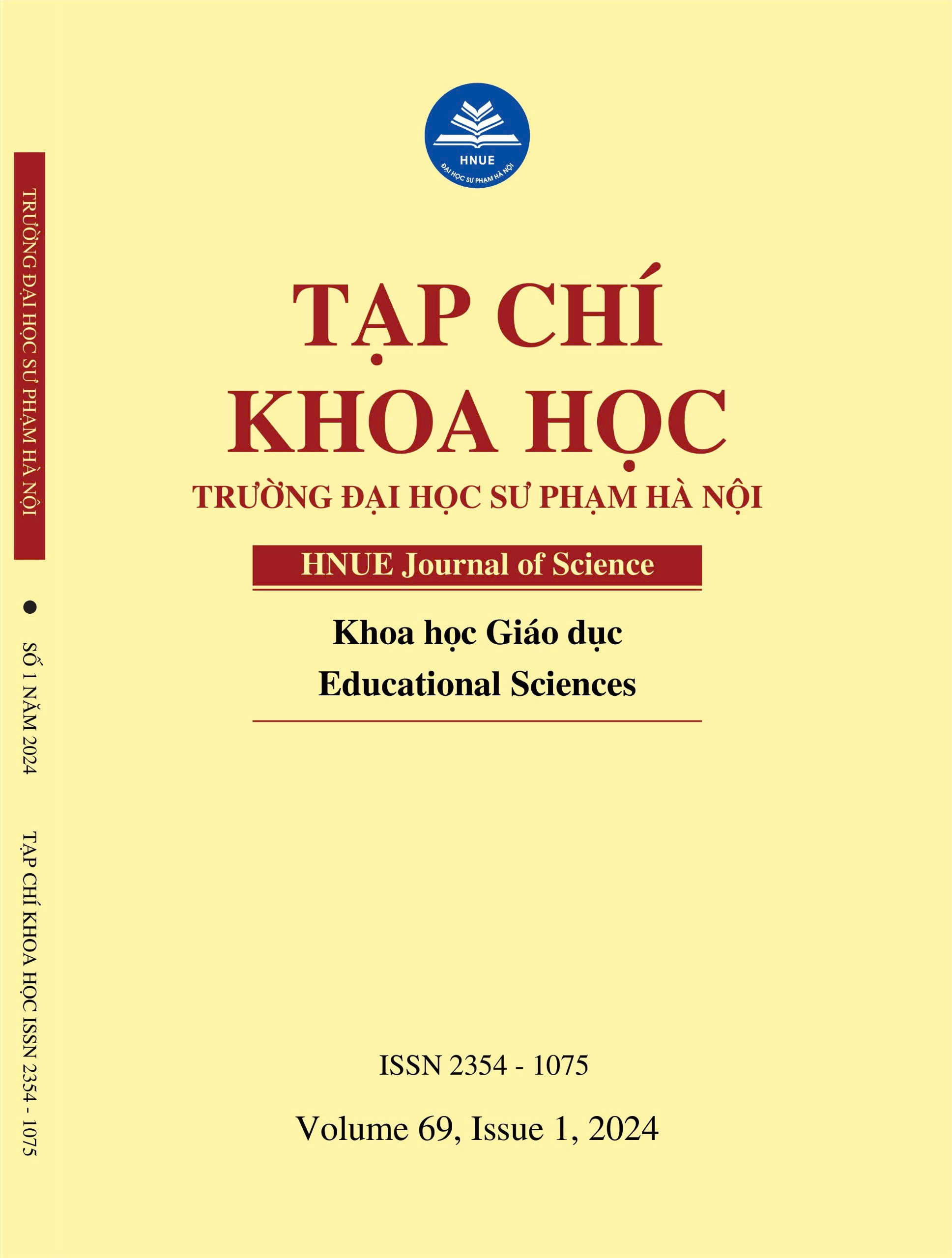DESIGN AND PERFORMANCE OF PUPPETRY FOR CHILDREN: THE EFFECTIVENESS OF A PRACTICAL MODULE ON PRESCHOOL EDUCATION STUDENTS
DOI:
https://doi.org/10.18173/2354-1075.2024-0012Keywords:
design, performance, puppetry, shadow puppets, Preschool Education, studentsAbstract
This study aims to assess the impact of a shadow puppetry arts training module on Preschool Education students’ confidence in their knowledge and skills of design and performance of shadow puppetry. The researchers developed and implemented the training module for 116 fourth-year students at a university in Central Vietnam. Survey methods and group interviews were employed to evaluate the effectiveness of the training module. The research results indicate that the shadow puppetry design and performance module has positively influenced the students' confidence in both knowledge and skills. Students highly appreciate the interest and challenges encountered during the learning process, as well as the creative skills and exploration demonstrated through shadow puppetry design and performance, group cohesion, and the dedication of the instructing teacher. The principles and processes of shadow puppetry design and performance outlined in the study serve as valuable reference materials for teacher training institutions, students, and preschool educators. This research emphasizes the crucial role of the shadow puppetry arts module in developing the competencies of preschool teachers
Downloads
References
[1] Masunah, J., Dyani, P. L., Gaffar, V., & Sari, M., 2022. Production of Shadow Puppet Performances in Building Artistic Entrepreneurship. Journal of Sustainable Tourism and Entrepreneurship, 3(2, 89–100. https://doi.org/10.35912/joste.v3i2.1221
[2] Fernández, E, et al., 2022. In the Beginning, There were Dragon(cillo)s: Using Shadow Puppetry to Engage Young Audiences. Open Library of Humanities, 8(1): 3, pp. 1–20. DOI: https://doi.org/10.16995/olh.4791
[3] Liu, J., 2018. Chinese Shadow Puppetry: Shifting from the Traditional to the Modern. IISUniv.J.A. Vol.4(1), 25-45
[4] Gruber, C. (Ed.)., 2019. The Image Debate: Figural Representation in Islam and Across the World. Gingko. https://doi.org/10.2307/j.ctv1wmz3m6
[5] Sulaksono, D., & Sadhhono, K., 2019. Ecological Messages in The Ramayana Story of The Wayang Purwa Shadow-Puppet Play. Lekesan: Interdisciplinary Journal of Asia Pacific Arts, 2(1), p.1-7.
[6] Ramli, W.N., & Lugiman, F., 2012. The Contribution of Shadow Puppet's Show through Engaging Social Communication in Modern Society. Procedia - Social and Behavioral Sciences, 35, 353-360. https://doi.org/10.1016/j.sbspro.2012.02.098
[7] Pramono, Y.L., Suyanto, S., & Wahida, A., 2017. Shadow puppet arts as the formation of young generation characters. Proceedings of 2nd International Conference of Arts Language and Culture. P.397-404.
[8] Shih, J., & Chiu, F., 2020. The Transformation of Taiwanese Shadow Puppet Images and Its Application to Zero-waste Fashion Clothing. Advances in Social Science, Education and Humanities Research, volume 416, p.220-224.
[9] Gray, P., Rule, A.C., Gentzsch, A., & Tallakson, D.A., 2016. Shadow Puppet Plays in Elementary Science Methods Class Help Preservice Teachers Learn about Minority Scientists. Journal of STEM Arts, Craft, and Constructions, Volume 1, Number 1, p.27-45
[10] STEM Learning, 2019. Making Shadow Puppets. Truy cập ngày 12/01/2023 tại https://www.stem.org.uk/resources/elibrary/resource/35265/making-shadow-puppets
[11] Ocal, E., Karademir, A., Saatcioglu, O., & Demirel, B., 2021. Preschool teachers’ preparation programs: The use of puppetry for early childhood science education. International Journal of Educational Methodology, 7(2), 305-318. https://doi.org/10.12973/ijem.7.2.305
[12] Vân VT, 2020. Phát triển tình cảm xã hội cho trẻ mẫu giáo 5-6 tuổi thông qua nghệ thuật múa rối nước. Kỷ yếu Hội thảo khoa học Cán bộ trẻ các trường Đại học Sư phạm toàn quốc lần thứ VIII - năm 2020, ISBN:978-604-974-704-5, tr. tr 768-778
[13] Creswell, J. W., & Creswell, J. D., 2017. Research Design: Qualitative, Quantitative, and Mixed Methods Approaches. Sage Publications.
[14] Trường Đại học Sư phạm, Đại học Huế, 2018; 2021, Chương trình đào tạo trình độ Đại học ngành Giáo dục Mầm non. Truy cập ngày 12/01/2023 tại http://www.dhsphue.edu.vn/cd_cmk.aspx?cd=41&id=0
[15] Warmbrod, J.R., 2014. Reporting and Interpreting Scores Derived from Likert-type Scales. Journal of Agricultural Education, 55(5), 30-47. doi: 10.5032/jae.
[16] Beth Osnes, 2010. The Shadow Puppet Theatre of Malaysia: A Study of Wayang Kulit with Performance Scripts and Puppet Designs. McFarland.







